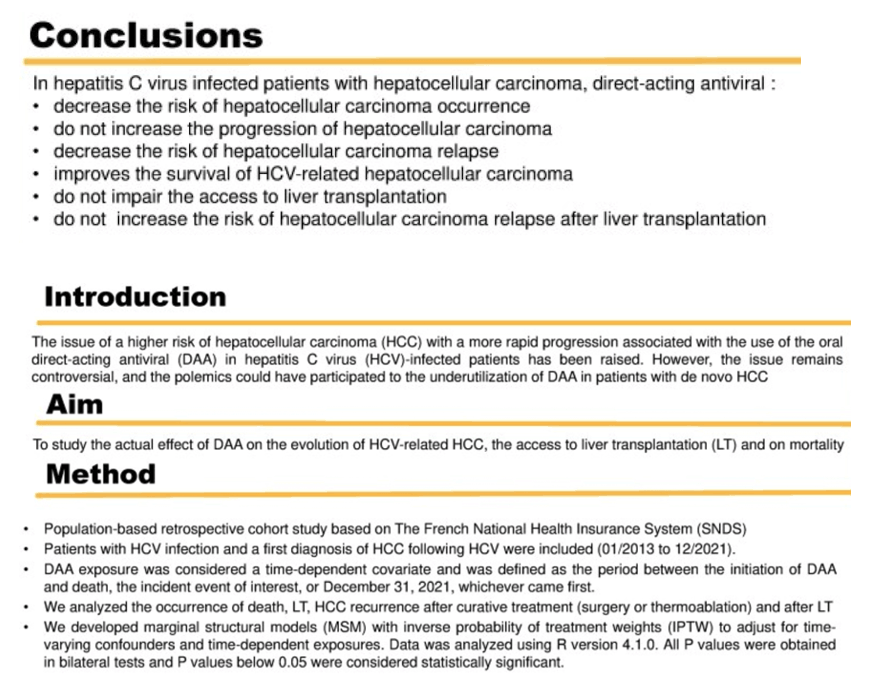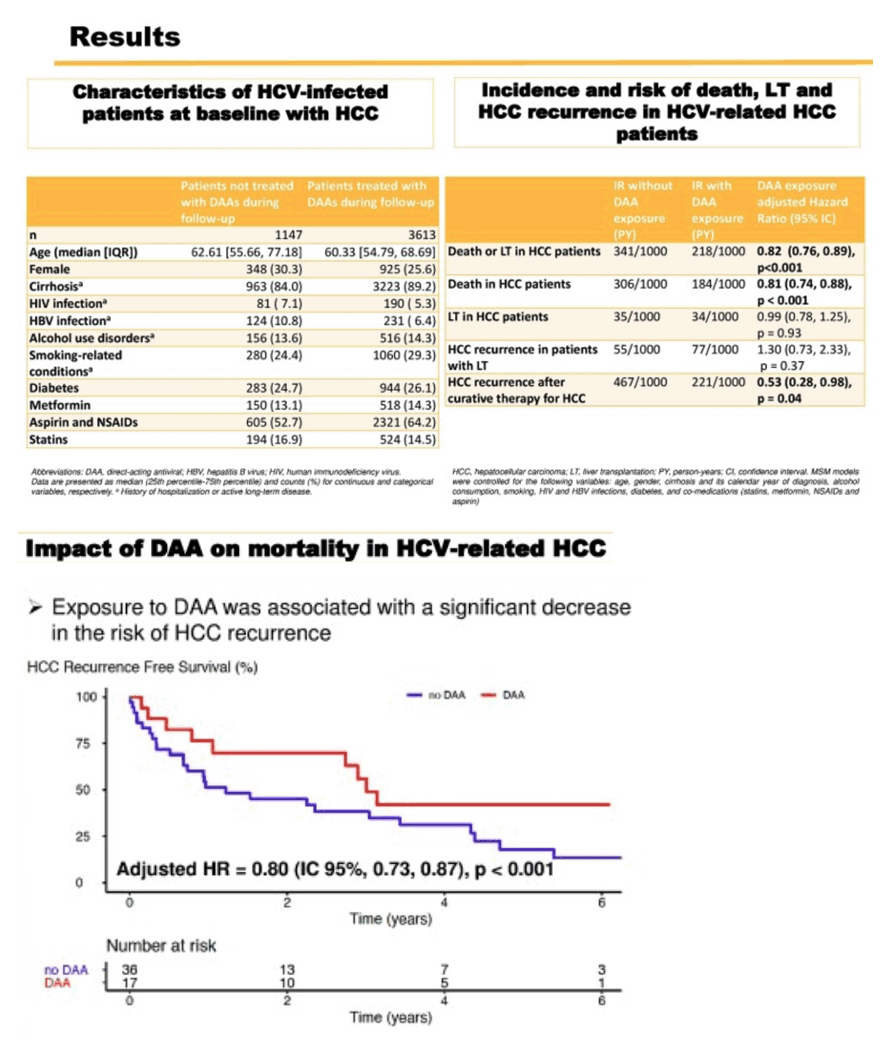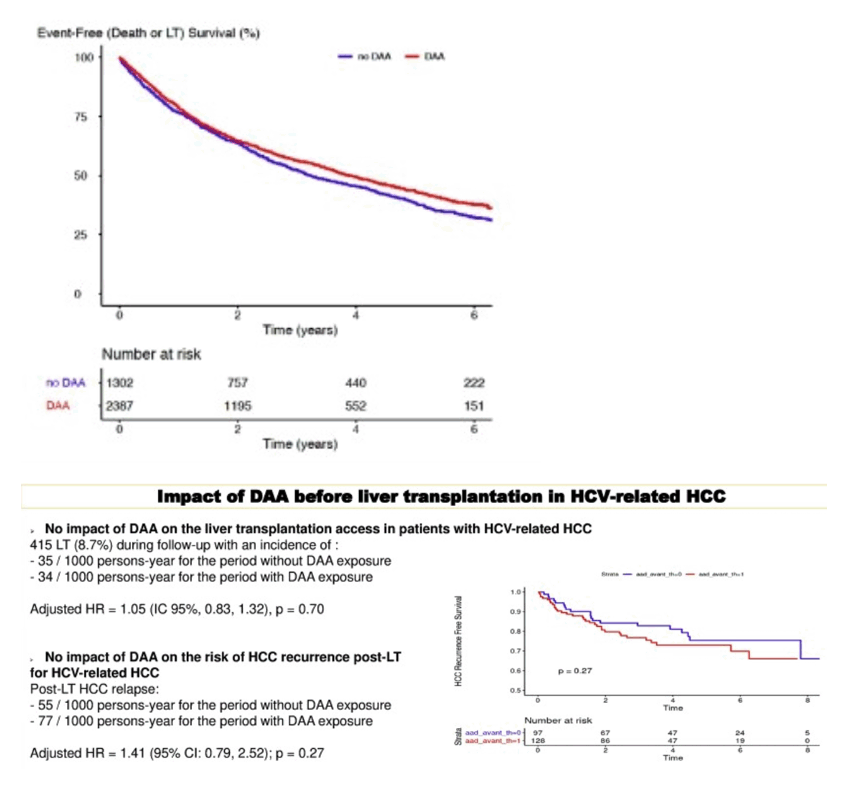 |
 |
 |
| |
Impact of Hepatitis C virus direct acting antivirals on HCC evolution
|
| |
| |

Results: Among the 4760 patients with HCV-related HCC, 2585 deaths (54.3%) occurred during the follow-up. The incidence and risk of mortality was reduced after DAA exposure (incidence rate (IR) of 306/1000 person-years (PY) before DAA exposure and 184/1000 PY after DAA exposure, adjusted hazard-ratio (aHR) 0.81; 95% CI 0.74-0.88; p < 0.001). A total of 418 LT (8.8%) was performed during the follow-up (IR of 35/1000 PY before DAA exposure and 34/1000 PY after DAA exposure, aHR 0.99; 95% CI 0.78-1.25; p = 0.93). DAA exposure was associated with a significant reduction of HCC
recurrence in patients undergoing a curative therapy for HCC (aHR 0.53; 95% CI 0.28-0.98; p = 0.04). HCC relapse after HCC-related LT occurred in 52 patients out of 225 patients with LT after HCC and naive for HCV treatment. The incidence rates of HCC relapse after LT were 77/1000 PY of DAA exposure and 55/1000 PY of no DAA exposure (aHR 1.30, 95% CI 0.73, 2.33; p = 0.37).
Conclusion: After a first diagnosis of HCV-related HCC, DAA treatment, compared to no DAA treatment, was associated with a reduced risk of mortality in patients with HCV-related HCC and a reduced risk HCC recurrence after curative therapy for HCC. DAA exposure did not limit access to transplantation in patients with HCV-related HCC and was not found associated with an increased risk of HCC recurrence after LT. Our findings support the recommendation of DAA therapy in all cases of HCV-related HCC.



|
| |
|
 |
 |
|
|